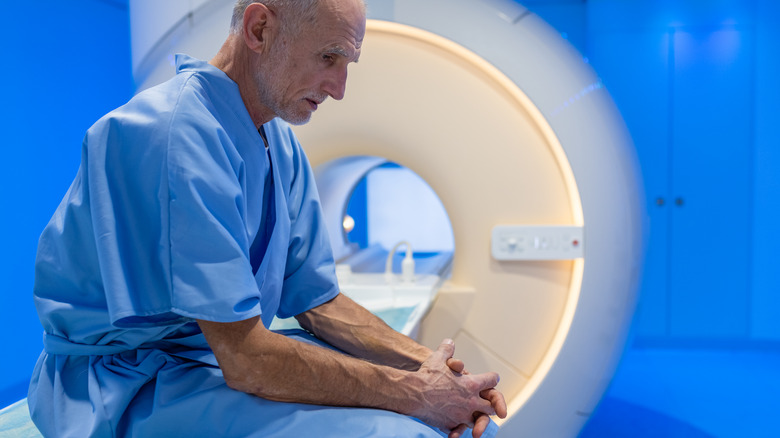Your Risk Of Prostate Cancer Increases If You Live Here
According to the American Cancer Society, around 1 in 8 men will receive a prostate cancer diagnosis, with 60% of those being made for men who are 65 or older. It's the second most common cancer among men and the fourth leading cancer globally, per the World Cancer Research Fund International. Usual conversations surrounding risk factors focus on age, race (African American and Caribbean men of African ancestry are more at risk), and family history. But did you know that where you live might also fall under the umbrella of risk factors?
Research suggests that people living in North America and Northern Europe might be more at risk. Specifically, Estonia, Saint Lucia, the United Kingdom, The Bahamas, Sweden, and Puerto Rico had the highest rates in 2020, per Yahoo Finance. Other regions or countries with a higher prostate cancer incidence than the rest of the world include Australia, the Caribbean Islands, the Czech Republic, New Zealand, and France. Among the things that factor into this are foods that can help prevent prostate cancer, lifestyle, and screening capacity.
Diet and lifestyle factors that contribute to prostate cancer risk
Everything from how much fruit and vegetables make up your diet to smoking to ancestry and even environmental, behavioral, socioeconomic, and infection-related factors contribute toward a risk of prostate cancer. Although the exact reasons why certain regions have a higher incidence than others are unclear, experts point toward diet and lifestyle as possible factors.
For example, a diet rich in saturated fat is considered a risk factor. Red meat, well-done meat, dairy, and a high intake of calcium are thought to be associated with prostate cancer risk too. Lower consumption of fruits, vegetables, legumes, nuts, seeds, and whole grains in relation to meats and fats is a concern as well. With lifestyle-related concerns, obesity, smoking, alcohol consumption, lack of adequate sleep, lack of exercise, and being exposed to environmental contaminants make up the list.
Interestingly, prostate cancer incidence is increasing in Asian people living in urbanized settings too, like Hong Kong, Singapore, and India. "India's eating setting has changed significantly in recent years as a result of globalization and urbanization. Young Indians are consuming more and more processed foods, sweetened beverages, and high-fat meals as part of their Westernized diets," explained Dr. Dinesh Singh, Andromeda Cancer Hospital's Chairman of Radiation Oncology (via Times of India).
Access to and quality of prostate cancer screening
According to a 2017 study in the Scandinavian Journal of Urology, large-scale opportunistic prostate specific antigen (PSA) testing of middle-aged and elderly men could be linked to the higher number of cases recorded in Estonia between 1995 and 2014.
A 2022 study in European Urology noted that increasing acceptance of prostate cancer screening with approaches like magnetic resonance imaging (MRI) and biomarkers could be influencing numbers. While higher-income regions have access to better screening, the same cannot be said of poorer regions, per experts. "In lower-income countries, access to wellness checks is limited. Patients may limit seeking medical attention until they have significant symptoms from progressive or late-stage disease, which may no longer be curable," shared Dr. Chinmay Jani of the Miami Sylvester Comprehensive Cancer Center (via ASCO Daily News).
Noticing the sneaky signs you might have prostate cancer and getting checked at the right time can go a long way when it comes to curbing the progression of the disease. Signs to watch out for include trouble urinating, a weak urine stream, bloody pee, blood in your semen, erectile dysfunction, bone pain, and unexplainable weight loss. Your doctor may order a PSA blood test and also perform a digital rectal examination. A biopsy might also be recommended, depending on your particular case. As for what age you should start getting prostate cancer screenings, 40 is the recommended age if you're at very high risk and 50 if you're at average risk.



